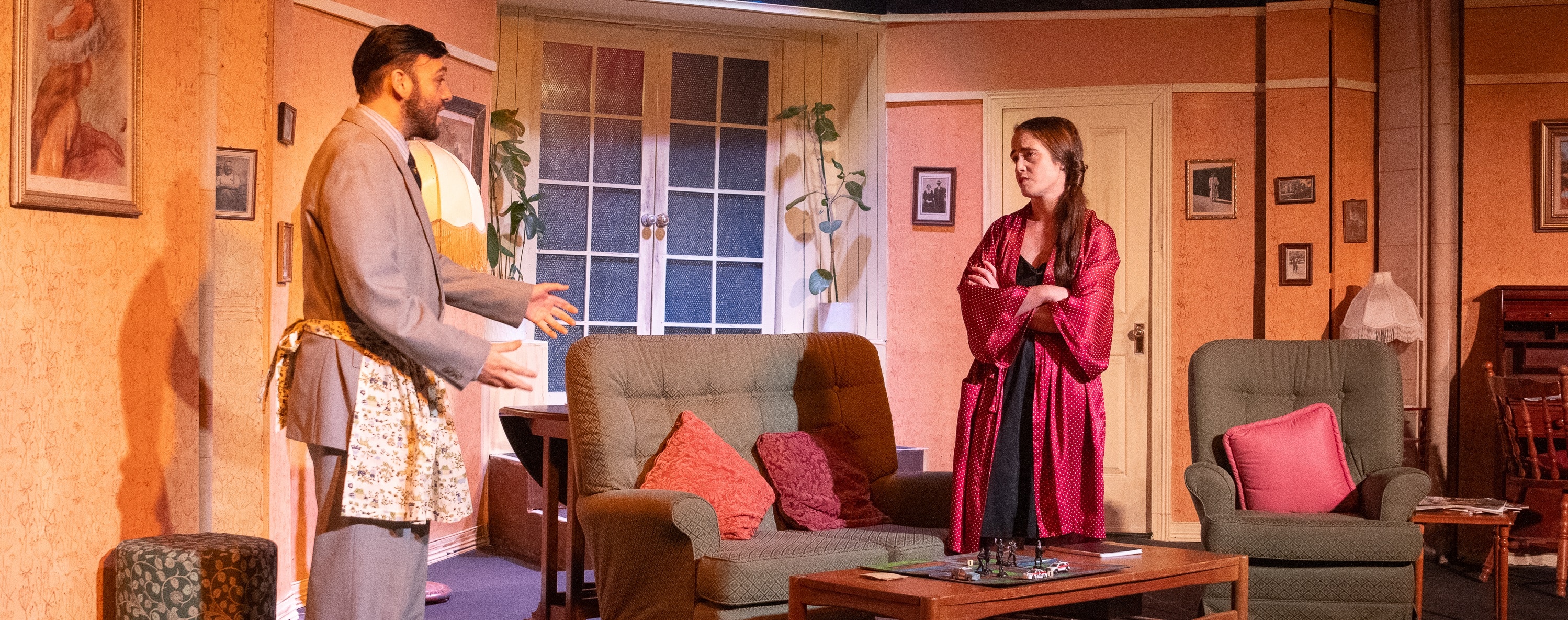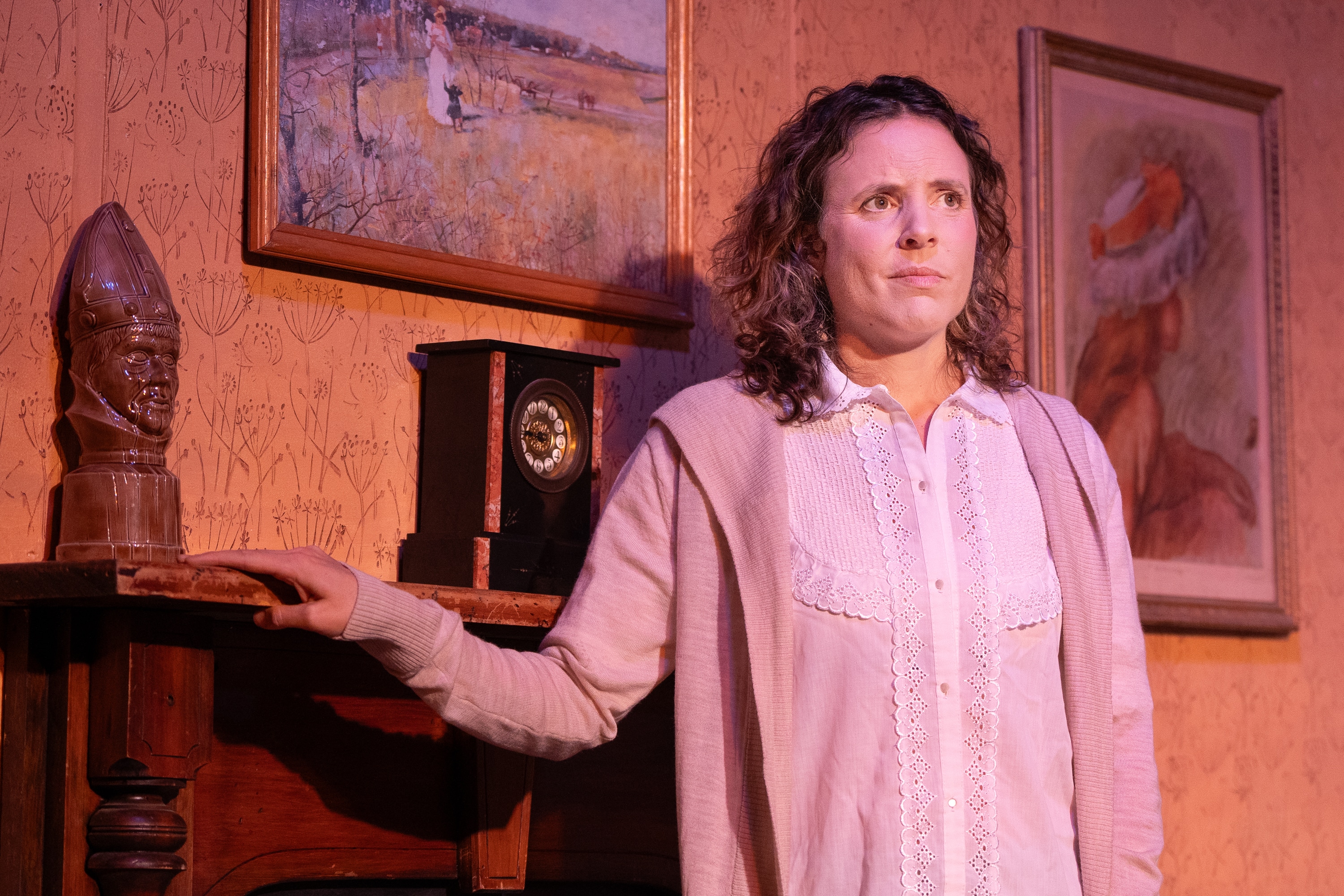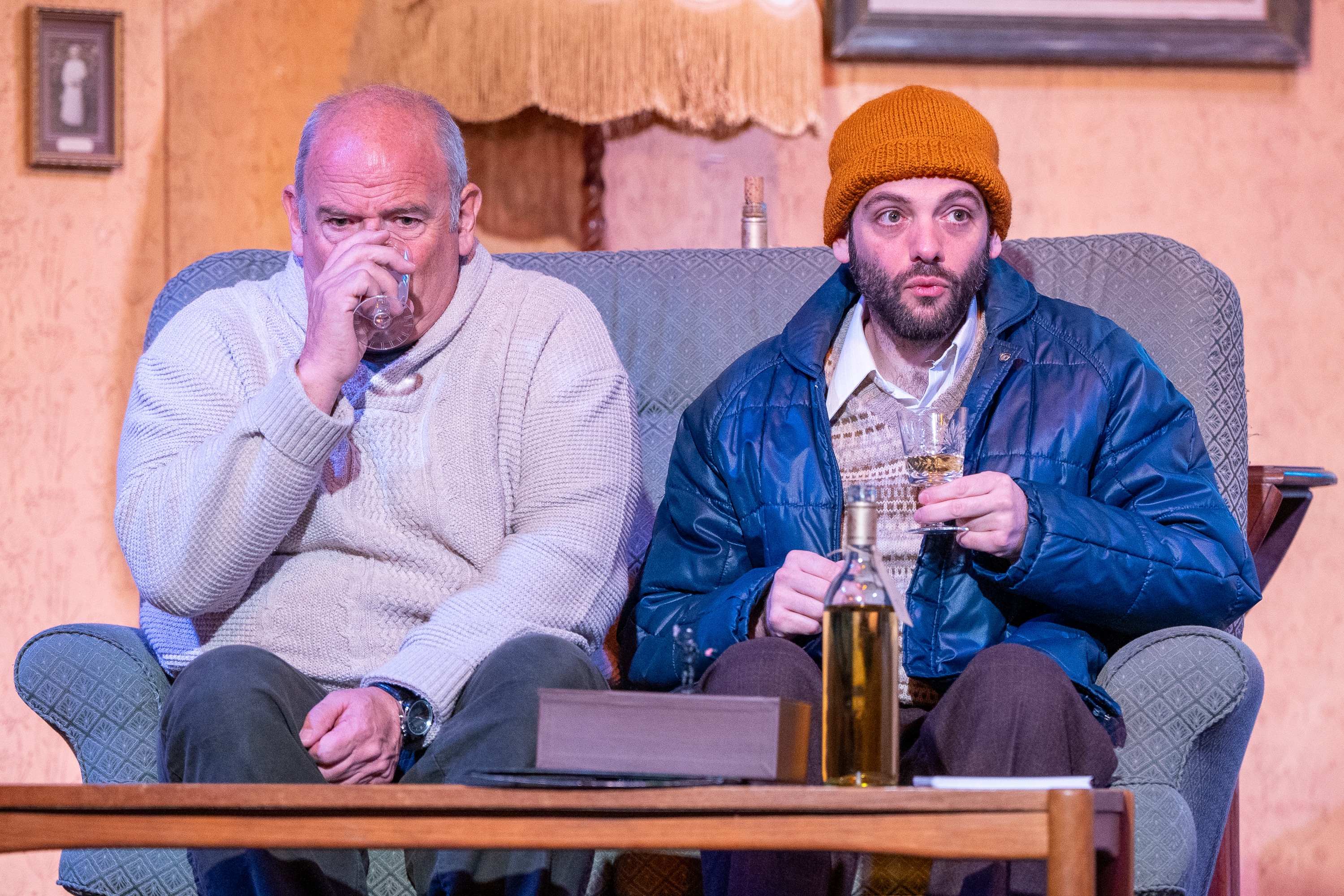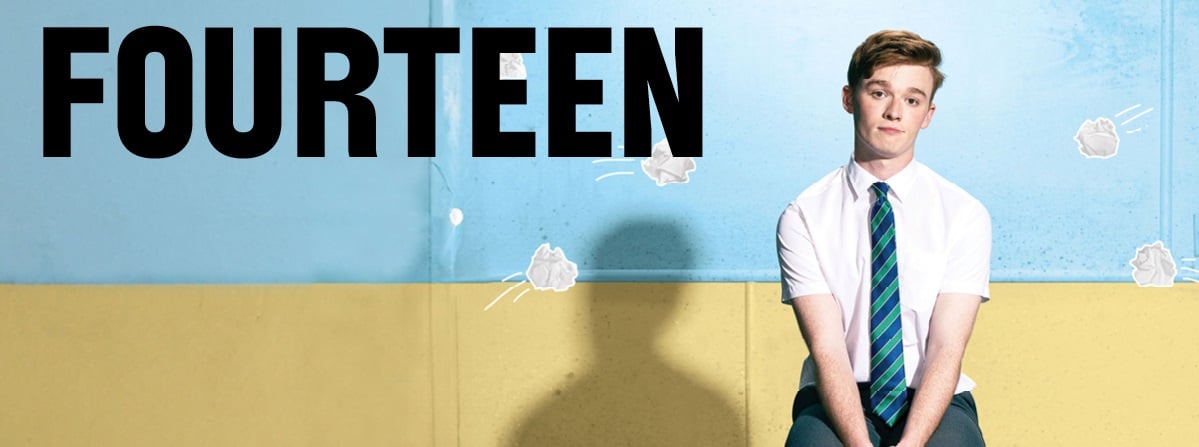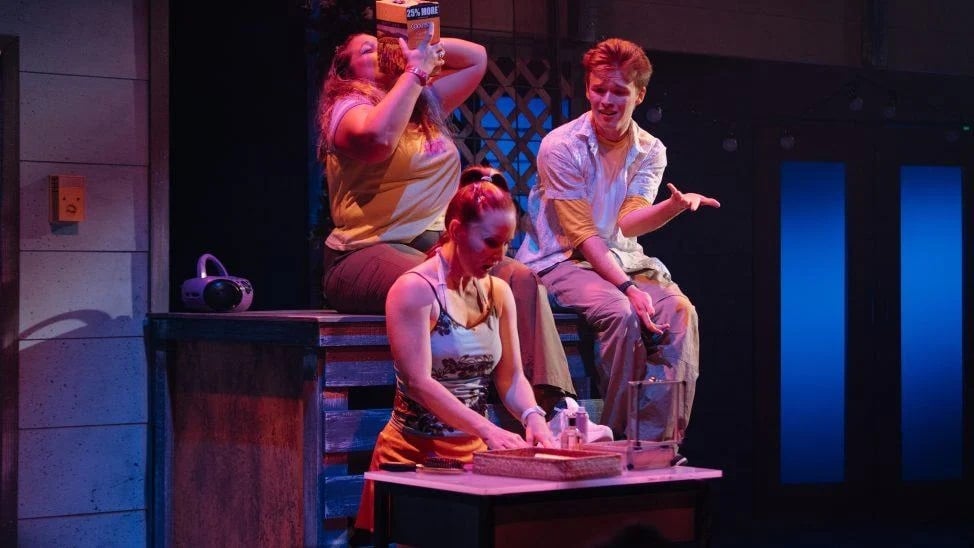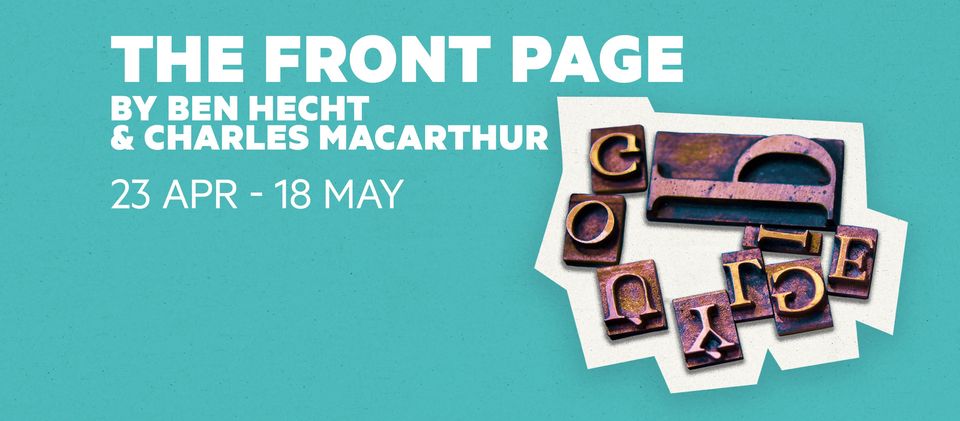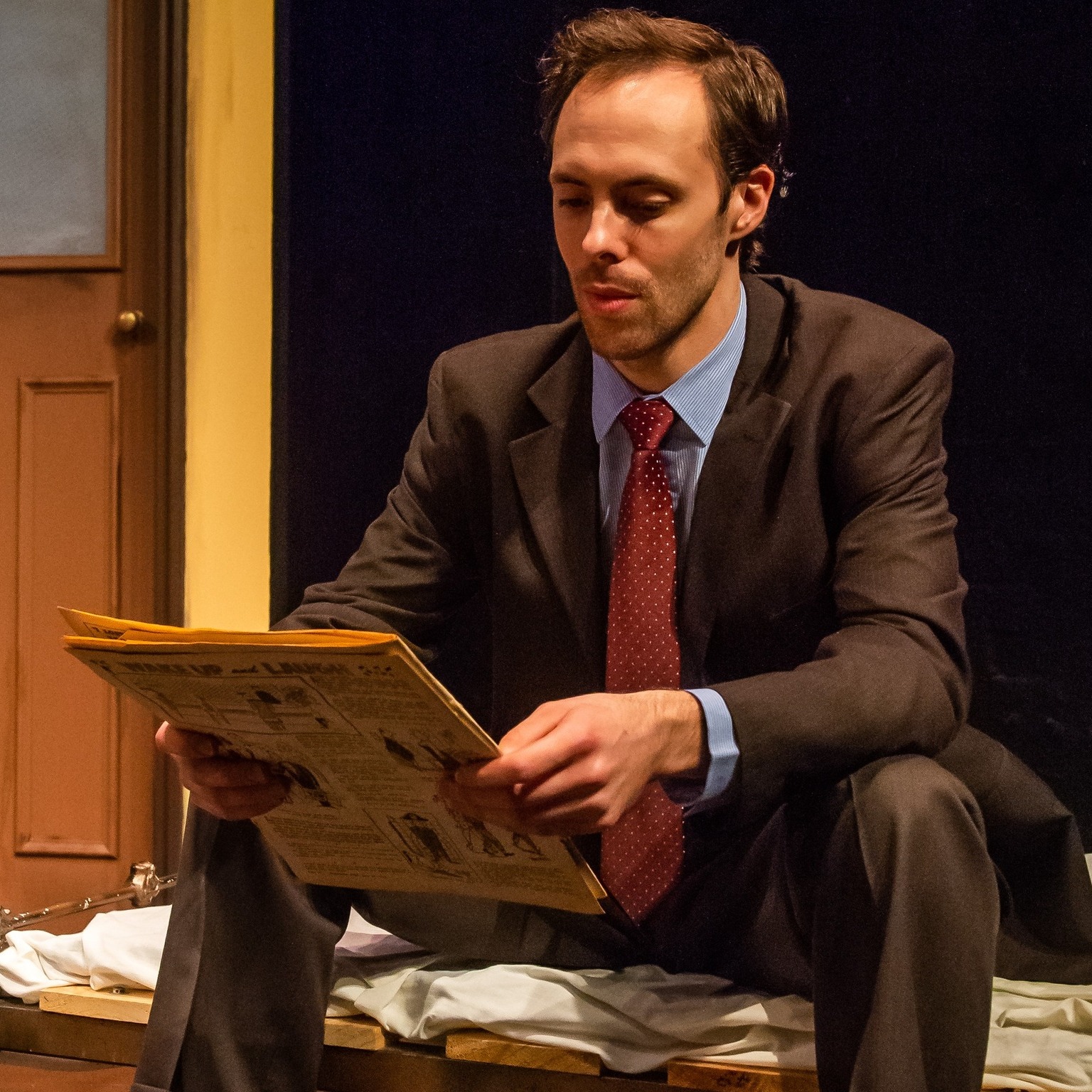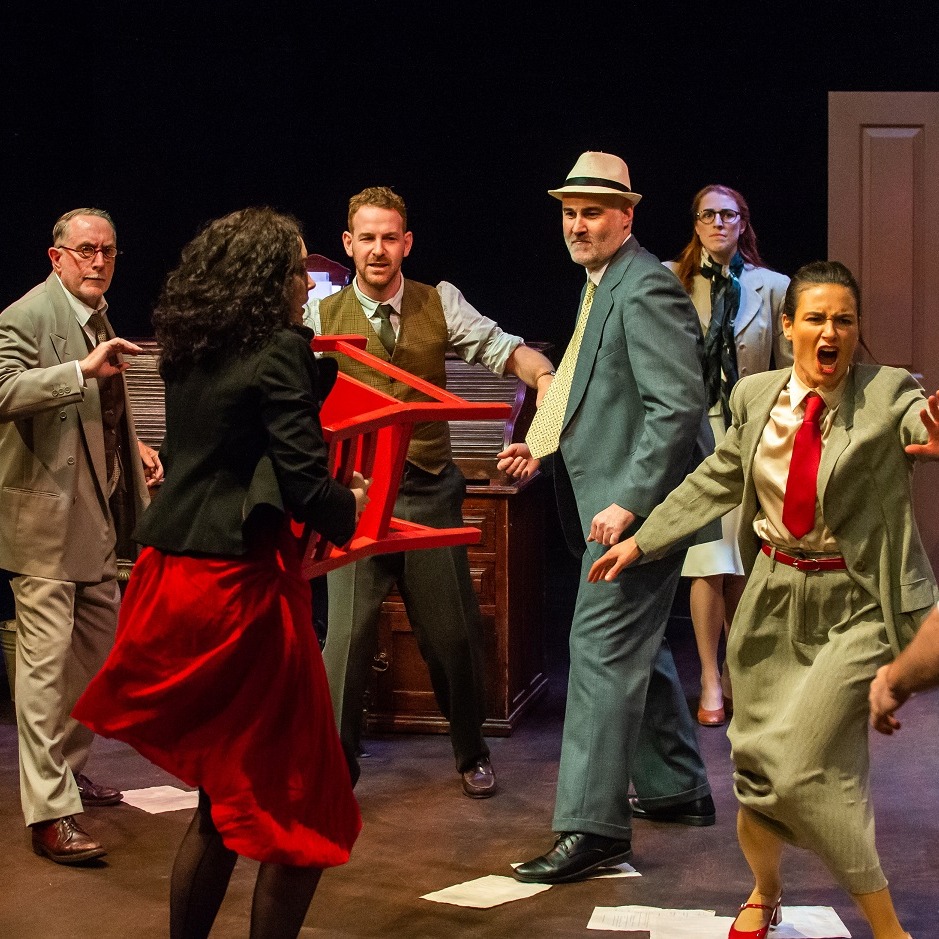I didn’t know what to expect with a title such as this one, ‘Let’s Kill Agatha Christie’. Murder? Mystery? Plot twists, a curious and confident detective, and the Big Reveal at the end? Ms Agatha Christie serves as the contemporary writing adversary to the main character, Prudence Sykes (flamboyantly played by Caitlyn Clancy).
Although Agatha Christie does not appear in this play, her presence is felt – she is in the room, the aptly named Grey Room. Thanks to the director and set designer Gregory George, everything in this room, including the flowers and the fireplace, is grey. We are told that other rooms in the house are all painted different colours. Perhaps the reason the sitting room in this grand English mansion is grey could be because it reflects how Prudence feels inside, her insecurities, or maybe because it provides the backdrop and accentuates the characters’ colourful personalities.
Prudence, a prolific author of many novels (27, not 28 as one was rejected by her publisher) craves success as her crime novels have not reached the popularity of Agatha Christie. She desperately wants recognition and to be respected as a writer. Prudence hatches a plan. She invites three of her known enemies to her house and plants a script for them to find, giving each of them a reason to kill her.
The genre of the murder mystery thriller is explored, and The Genesian Theatre Company kept the audience guessing as to what was going to happen next. Michael Schell, who created the lighting and sound design, made full use of creating a dark atmosphere, especially with the music that played to open both the first and second act.
As each character was announced into the sitting room by the sardonic butler Tombs (played by Peter J Donnelly) I was already wondering who going to be the murderer.
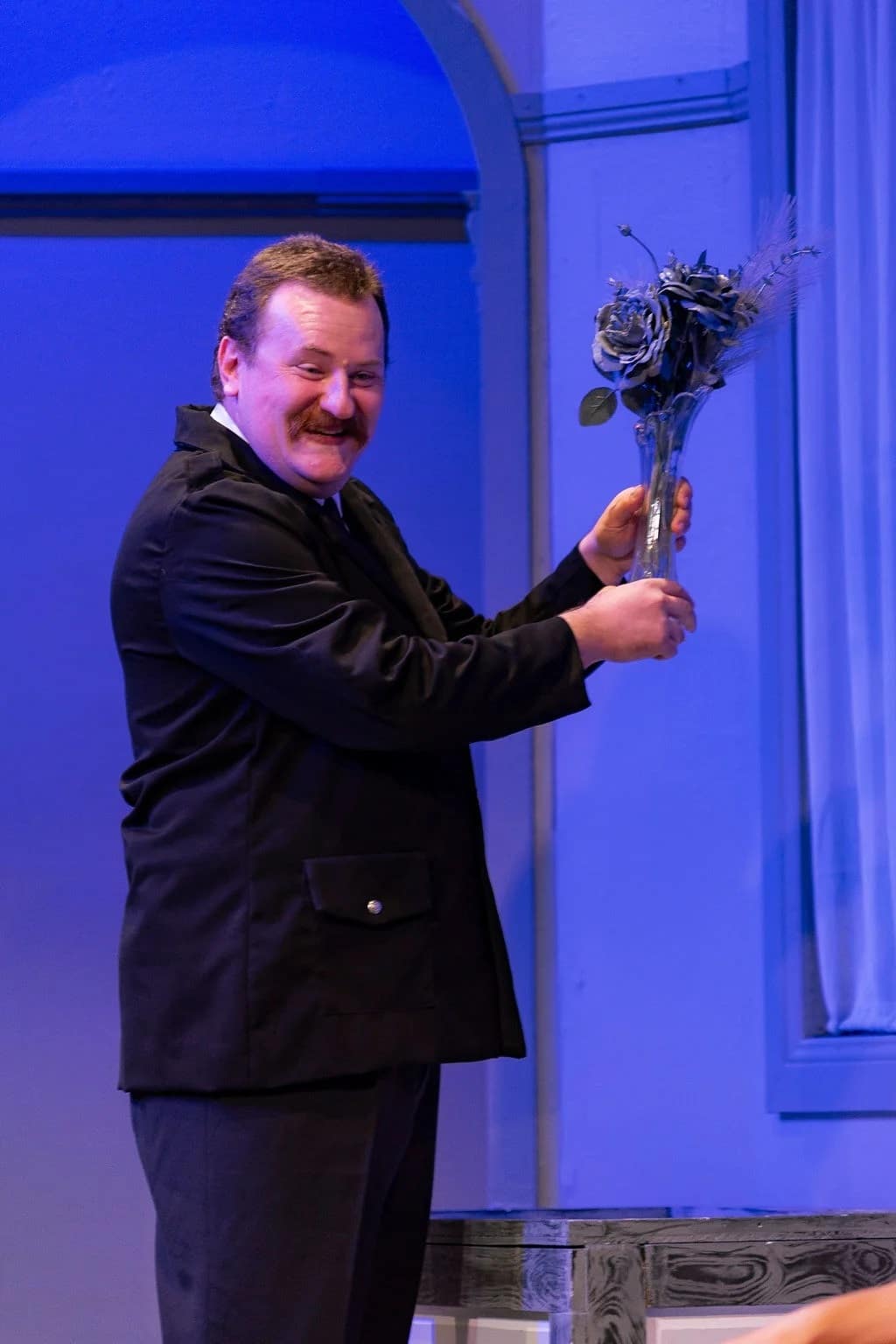
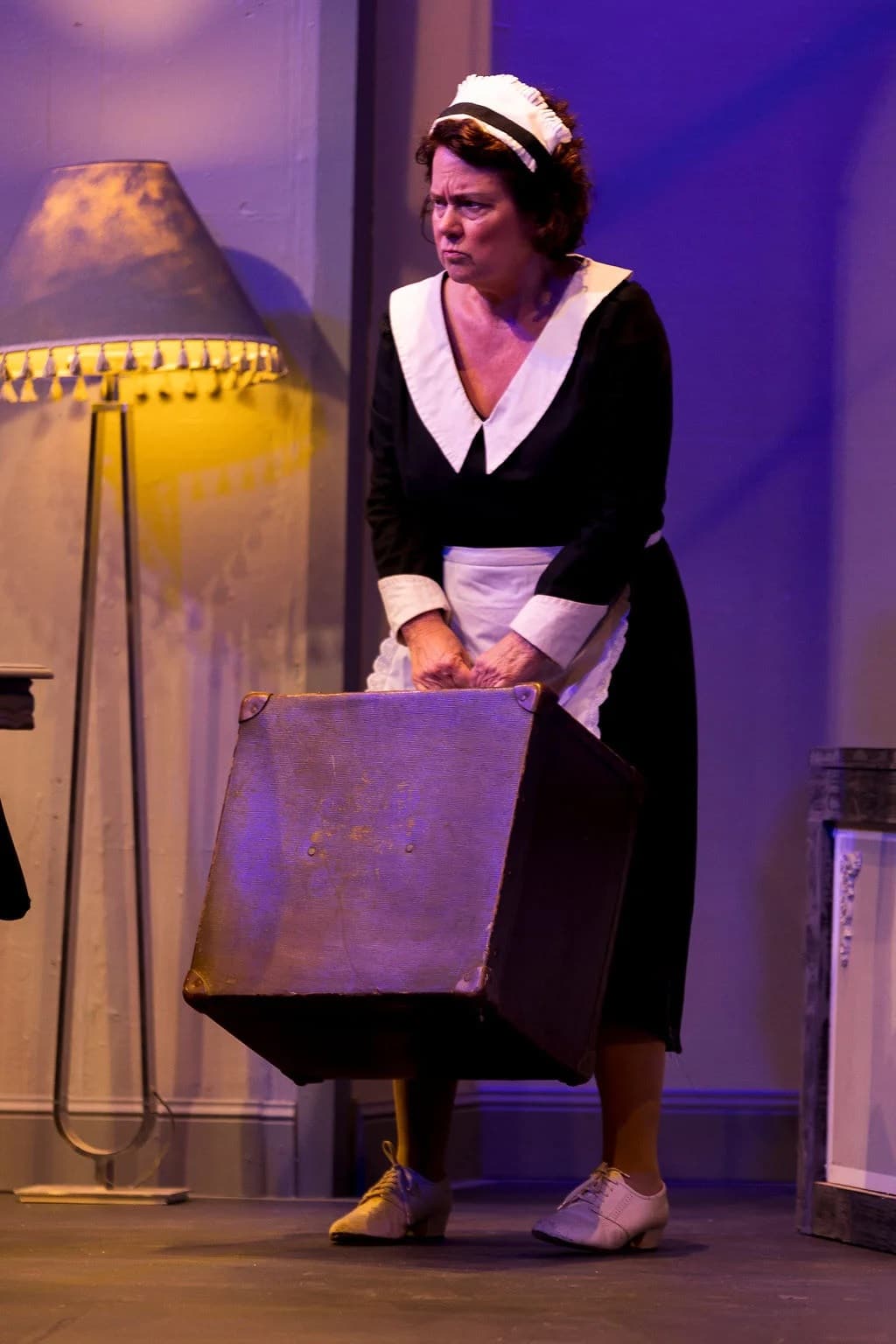
Prudence’s guests were all successful – a self-made millionaire named Sir Frederick Belting, a successful poetess named Marjorie Field and a famous actor John Hartley – Miles. Theo Hatzistergos appeared to have fun portraying a pompous and arrogant Frederick, ordering Tombs to get his luggage from his car, (a Rolls Royce,) which he drops into the conversation several times. Natalie Reid returns to The Genesian Theatre to play Marjorie, who tries multiple times to recite her poetry aloud, despite the protestations of the other guests, which made the audience laugh. Bryan Smith brings the actor John to life in the play, giving him a nervous yet quite kind disposition.
A few more characters completed the cast, with Denise Kitching (Montgomery) as Angela Teal, Prudence’s PA, Andrea Blight as the shuffling and stooped Gladys the housemaid, who drew quite a few laughs due to her character’s personality, Brendan Layton as Inspector Murray and Harry Lewis as PC Crockett. Their accents were believably British for most of the performance and the costumes for all characters by Susan Carveth were convincing of the time period.
This play had a comedic element which ran all the way through. Veiled insults thrown at each other and clever quips were woven into the dialogue. Other times the comedy was physical – the top step tripping up the characters became a running theme, and it was funny watching how different characters dealt with this tiresome step.
‘Let’s Kill Agatha Christie’ was written by Anthony Hinds after he retired from making horror movies and published in 1990. It was an entertaining homage to the mystery murder genre and to Agatha Christie.
I watched the opening night’s performance on Saturday May 4 and it ran for 2 hours with a 20 minute interval. It is playing on Fridays, Saturdays and Sundays until the 8 June 2024.
The Genesian Theatre 420 Kent St, Sydney. Tickets from $30
This review also appears on It’s On The House. Check out more reviews at Whats The Show to see what else is on in your town.

